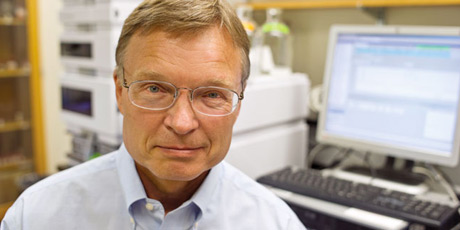Air Time
Breathing Life into Space Travel
NASA chooses UT Arlington to develop oxygen recovery technology for mission to Mars

While robots have studied Mars for more than 40 years now, human exploration of the Red Planet remains an unfulfilled mission. Armed with a $513,356 NASA grant, an interdisciplinary team of UT Arlington researchers is moving the dream closer to reality.
Through its Game Changing Development Program, NASA selected UTA as one of four U.S. institutions to develop improved methods for oxygen recovery and reuse aboard human spacecraft. The agency says the technology is crucial to “enable our human journey to Mars and beyond.”
The principal investigators are Brian Dennis, professor of mechanical and aerospace engineering; Krishnan Rajeshwar, Distinguished Professor of chemistry and biochemistry; and Norma Tacconi, research associate professor of chemistry and biochemistry.
They will design, build, and demonstrate a microfluidic electrochemical reactor to recover oxygen from carbon dioxide that is extracted from cabin air. The plan is to construct the prototype over the next year at the University’s Center for Renewable Energy, Science, and Technology.
The team will demonstrate the prototype to NASA at the end of the project’s 15-month Phase I period and, if they are selected for Phase II, build a full-scale unit.
“We hope the technology will be flight-tested on the International Space Station sometime in the future,” Dr. Dennis says. “That’s what we’re really excited about and what we’ll be aiming for.”
Their design uses water and carbon dioxide as reactants and produces oxygen and hydrocarbon gases, such as methane. The gases can be vented into space and the oxygen used for breathing. Current oxygen recovery methods on the International Space Station achieve about a 50 percent recovery rate. The UTA team hopes to increase this to 75 percent or more.
A better rate means less oxygen needs to be stored, freeing up precious cargo space for prolonged missions.
“We have developed a nanocomposite electrode that speeds oxygen evolution at lower potential. That basically means it can produce more oxygen in a shorter time frame with less power and less reactor volume,” Dennis says. “This is important since power on a spacecraft is limited because it comes from solar panels, and spacecraft capacity also is limited. Things should be as compact and lightweight as possible.”
Illustration by David Plunkert

















